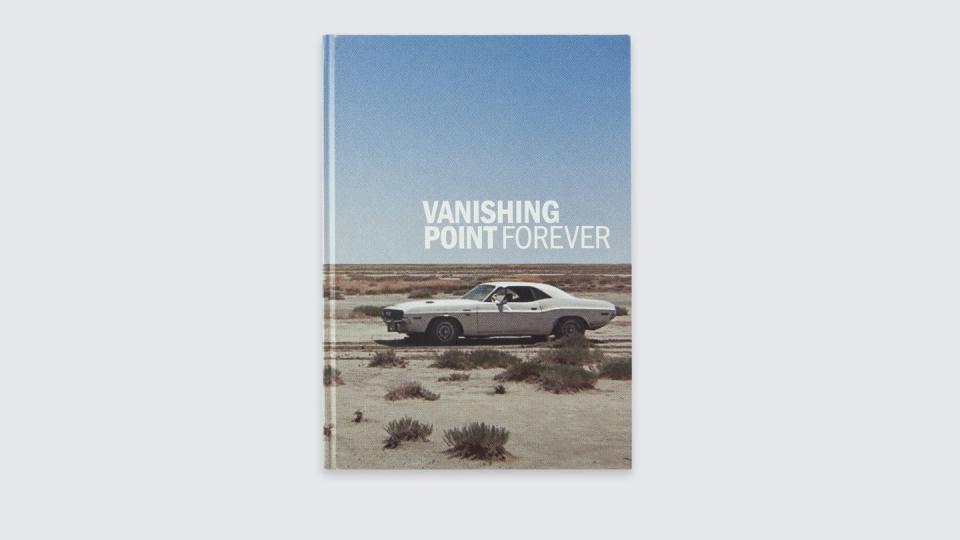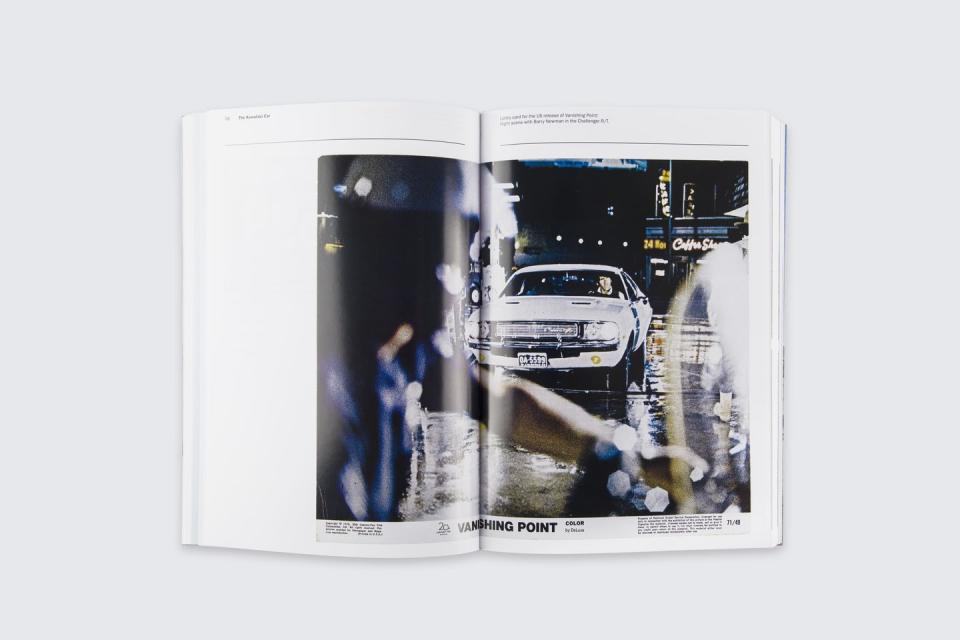'Vanishing Point Forever' Examines the Cult Classic Movie That Starred a '70 Dodge Challenger

"Hearst Magazines and Yahoo may earn commission or revenue on some items through these links."
The 1971 film Vanishing Point may be the ultimate cult classic car-chase movie. It bombed when it was first released by a confounded Fox studio as its answer to compelling countercultural anti-heroes of the emergent "New Hollywood" like Bonnie and Clyde and Easy Rider. But the $1 million movie went on to earn more than $30 million at the box office through extended runs at exploitation-flick "grindhouse" theaters in the U.S., and surprising strength in Europe.
The film is a muddle—thematically, stylistically, musically, narratively—but this, along with a starring role by a speeding, pistol-gripped 1970 Dodge Challenger R/T 440, is core to its appeal.

"I think what resonates with people is that the movie is very messy and confused as to what it is," says Robert Rubin, a retired financier, former vintage racer, and co-founder of "The Bridge" car show in the Hamptons, who has just written what may be the definitive book on the film: a dense, dizzyingly meta-textual, wildly entertaining, photo-rich brick of cinematic and cultural excavation, called Vanishing Point Forever. (Here's where to order it.) .
"Is it a car chase movie? Is it a parable about surveillance society? Is it a hippie, sex, drugs, and rock-and-roll movie?" Rubin asks, rhetorically. "It's a movie that one critic says is in conflict with itself. And so it leaves the possibility of multiple readings open." This confoundment is distilled in the main character, Kowalski, played by Barry Newman, a pill-popping former soldier and cop turned existential warrior, driving at top speed, to a country-fried-funk soundtrack, through an unbuckling America. "Newman himself is kind of a vanilla actor, and the way it's done, Kowalski is kind of a cipher," Rubin says. "And people can identify with him because there's more room to project meanings onto him."
The Challenger certainly aids in this mesmeric perplexity. According to Rubin, when the script was originally written—pseudonymously, by famed Cuban novelist and essayist Guillermo Cabrera Infante—the car was written as a Ford Galaxie 500. "But Chrysler was doing product placement in Hollywood and renting its cars for a dollar a day. Which is why Bullitt and Dirty Harry, Crazy Mary and all these movies have Chargers and Challengers in them," Rubin says.

Rubin's research process led him down all manner of forking paths. He met with Cabrera Infante's widow. He went to Princeton and spent time in the library with the author's archive, uncovering an article Cabrera-Infante had written for a Cuban magazine about hanging out with Marlon Brando in Havana, who was on the island illicitly looking to buy some bongos. "In his writing," according to Rubin, "Cabrera Infante talks about first glimpsing a Challenger in a garage and seeing, 'in its unbelievable whiteness, something definitely, fatally Melvillean.'" Paging Moby Dick.
He found an obscure New York Times article about famed Poland-born Spielberg cinematographer Januz Kaminski (Schindler’s List, Minority Report, West Side Story) that introduced him to the popularity of Vanishing Point in the Eastern Bloc during the Cold War. "It was imported to Eastern Europe on the basis that it showed the rot of American capitalism and the decline of Western civilization," Rubin says. He trolled Kowalski fan pages on Facebook. He found builders of Kowalski tribute Challengers on YouTube.
"The nice thing about these projects is that you're making your own algorithm," Rubin says. "You're not just being led by the nose by the internet. You're actually trying to stay one step ahead of the internet and find your own stuff."
Further signs of the alchemical long tail of Vanishing Point are myriad. Appropriative blue-chip contemporary artist Richard Prince has turned the Challenger, and its hood, into a kind of louche personal canvas-slash-sigil. Appropriative blue-chip contemporary filmmaker Quentin Tarantino has turned the Challenger and Vanishing Point into a literal vehicle for his own 2007 homage, Death Proof. So enduring is the legacy of the movie that it was just screened, in a restored 4K print, at New York City's Museum of Modern Art. And so alluring is the 1970 Challenger that it has inspired a shockingly popular and durable revival—selling over 775,000 copies since its 2008 resurrection—that not even the ceasing of production seems capable of curtailing. An electrified version is planned for next year.
![<p><a href="https://www.amazon.com/dp/B06XPGLJ2J?tag=syn-yahoo-20&ascsubtag=%5Bartid%7C10048.a.60033749%5Bsrc%7Cyahoo-us" rel="nofollow noopener" target="_blank" data-ylk="slk:Shop Now;elm:context_link;itc:0;sec:content-canvas" class="link ">Shop Now</a></p><p>Vanishing Point [Blu-ray]</p><p>amazon.com</p><p>$20.50</p>](https://s.yimg.com/ny/api/res/1.2/eCnctE.wXqMGnLWYrTtN5Q--/YXBwaWQ9aGlnaGxhbmRlcjt3PTk2MDtoPTExOTU-/https://media.zenfs.com/en/car_and_driver_581/334d470e36ae76ea0db33e232c6dd289)
Vanishing Point [Blu-ray]
amazon.com
$20.50
"The Challenger is a gorgeous, gorgeous car," Rubin says. "There's a description in the book that I find particularly apt, where British film critic Charles Taylor says, 'The gleaming white 1970 Dodge Challenger is so aerodynamically sleek, it appears to have reversed the laws of nature. This car doesn't look as if it displaces the air, but as if the air itself parts to make way for it.' "
He goes on. "There's something about Detroit Iron on the eve of the energy crisis. It's almost like there's an extinction event. And that there's all these kind of hard-ass, hardcore fans who still want that," he says. "We're all good global citizens and everything else. But we still want that too-much-power for the chassis and the handling and the brakes. It's a very American thing. They like it all over the world. We simply lead the charge."
You Might Also Like

 Yahoo Autos
Yahoo Autos 